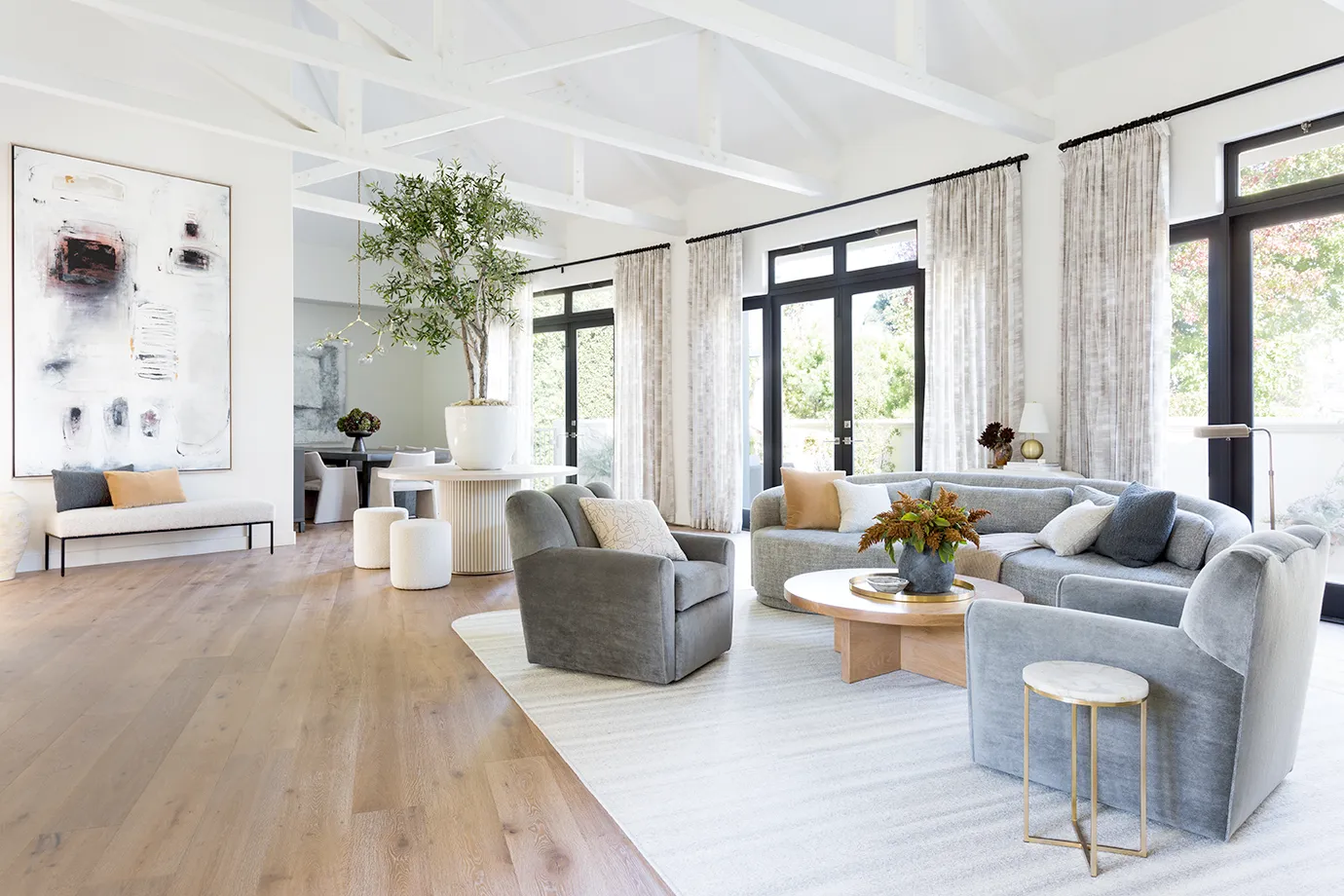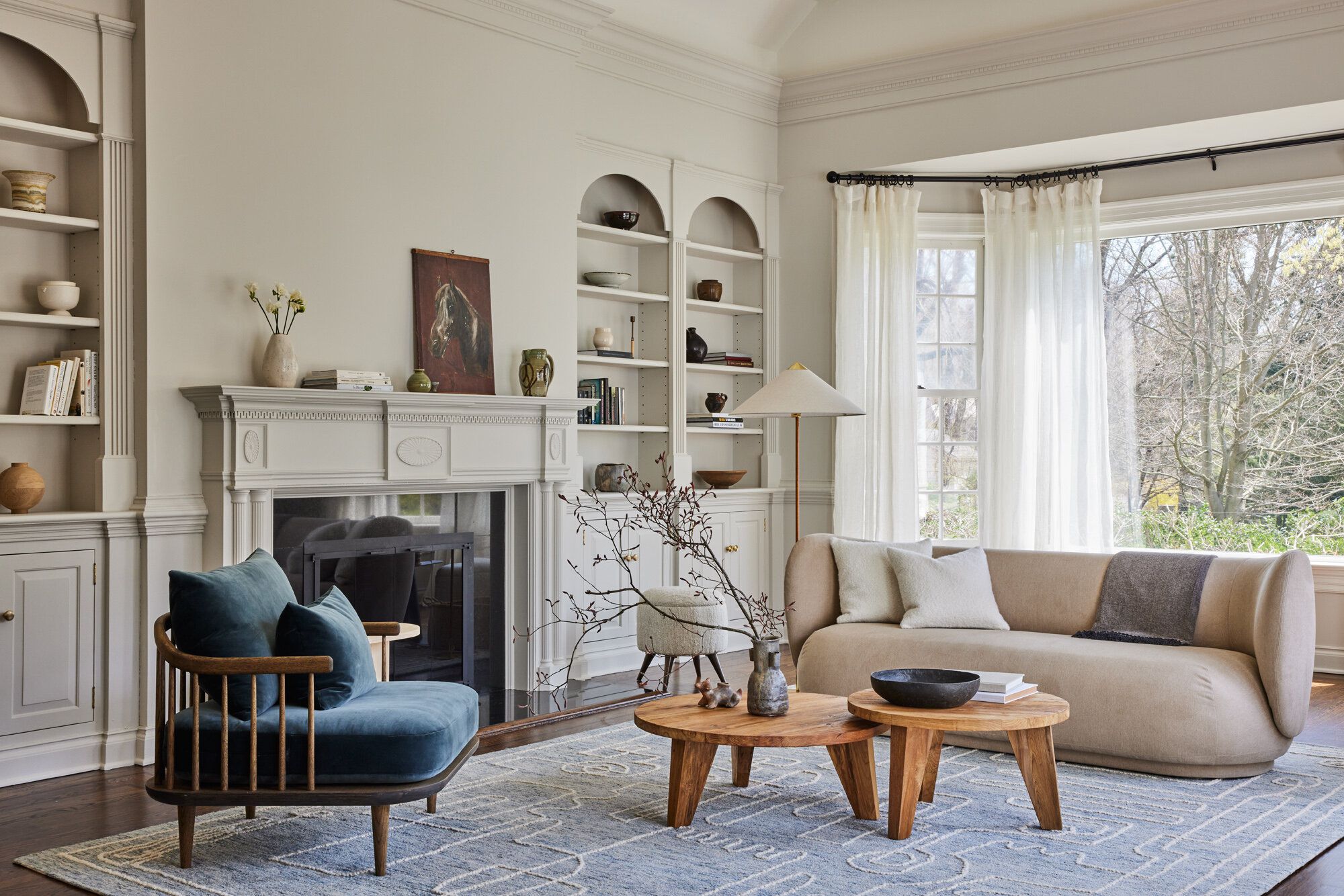Transitional house design represents a unique blend of traditional and modern architectural styles, creating environments that appeal to individuals who appreciate the timelessness of traditional elements while seeking the clean lines and innovative features of contemporary design. This approach focuses on harmoniously integrating characteristics from both traditional and modern aesthetics, offering a balanced and versatile living environment. Here are the key aspects and elements involved in transitional house design:
-
Fusion of Traditional and Modern Materials:
Transitional homes often incorporate a mix of traditional and modern materials to create a seamless integration of styles. Examples include combining traditional brick or stone facades with sleek, contemporary metal finishes, or juxtaposing classic wood elements with minimalist glass and steel details.

-
Balanced Color Palette:
Transitional design emphasizes a balanced and understated color palette, blending warm, neutral tones with touches of bold, contrasting colors. This approach creates a timeless and sophisticated ambiance that harmonizes traditional and modern elements within the home.
-
Merging Architectural Details:
Architectural details in transitional homes showcase a fusion of traditional and contemporary features. For instance, a traditional fireplace with a modern surround, coffered ceilings with streamlined lighting fixtures, or ornate molding alongside clean, angular lines all contribute to the transitional aesthetic.
-
Flexible Layouts:
Transitional homes often embrace open, flexible floor plans that provide a sense of connectivity and flow between spaces, while also incorporating defined areas for distinct functional purposes. This allows for a seamless transition between traditional and modern room arrangements, catering to various lifestyle preferences and needs.
-
Emphasis on Texture and Layering:
A characteristic feature of transitional design is the emphasis on texture and layering within the interior spaces. Combining traditional textiles, such as rich, tactile fabrics, with modern finishes, including smooth metals and glossy surfaces, creates a visually dynamic and inviting atmosphere.
-
Timeless Furnishings:
Furnishings in transitional homes often strike a balance between classic and contemporary styles, featuring clean lines and simple forms, alongside more ornate, traditional pieces. Simultaneously, a focus on comfort and functionality is paramount, creating a welcoming and livable environment.
-
Integrating Nature:
Transitional design integrates nature and outdoor elements by utilizing large windows, natural materials, and indoor-outdoor connectivity. This approach brings a sense of tranquility and balance to the living environment, blending traditional warmth with modern elegance.
-
Customization and Personalization:
For homeowners seeking transitional design, the ability to customize and personalize the space to reflect individual tastes and preferences is key. Tailoring the combination of traditional and modern elements allows for the creation of a unique, harmonious living environment that resonates with the occupants’ sensibilities.
Conclusion
Overall, transitional house design offers a comprehensive and harmonious approach that caters to individuals seeking a timeless, yet contemporary residential environment. By seamlessly blending traditional and modern elements, this design style provides a versatile, elegant, and comfortable living space that appeals to a diverse range of tastes and lifestyles.
